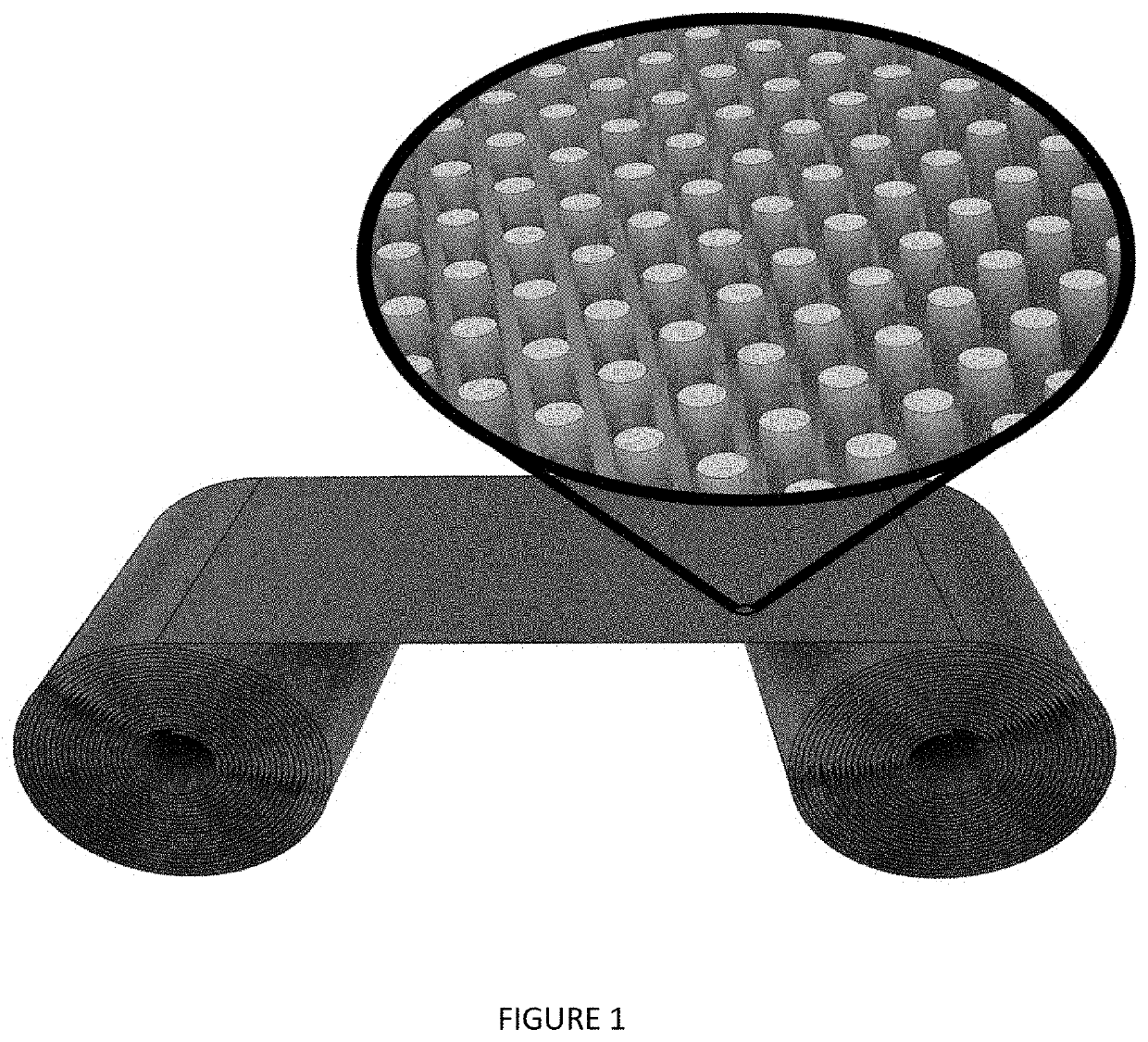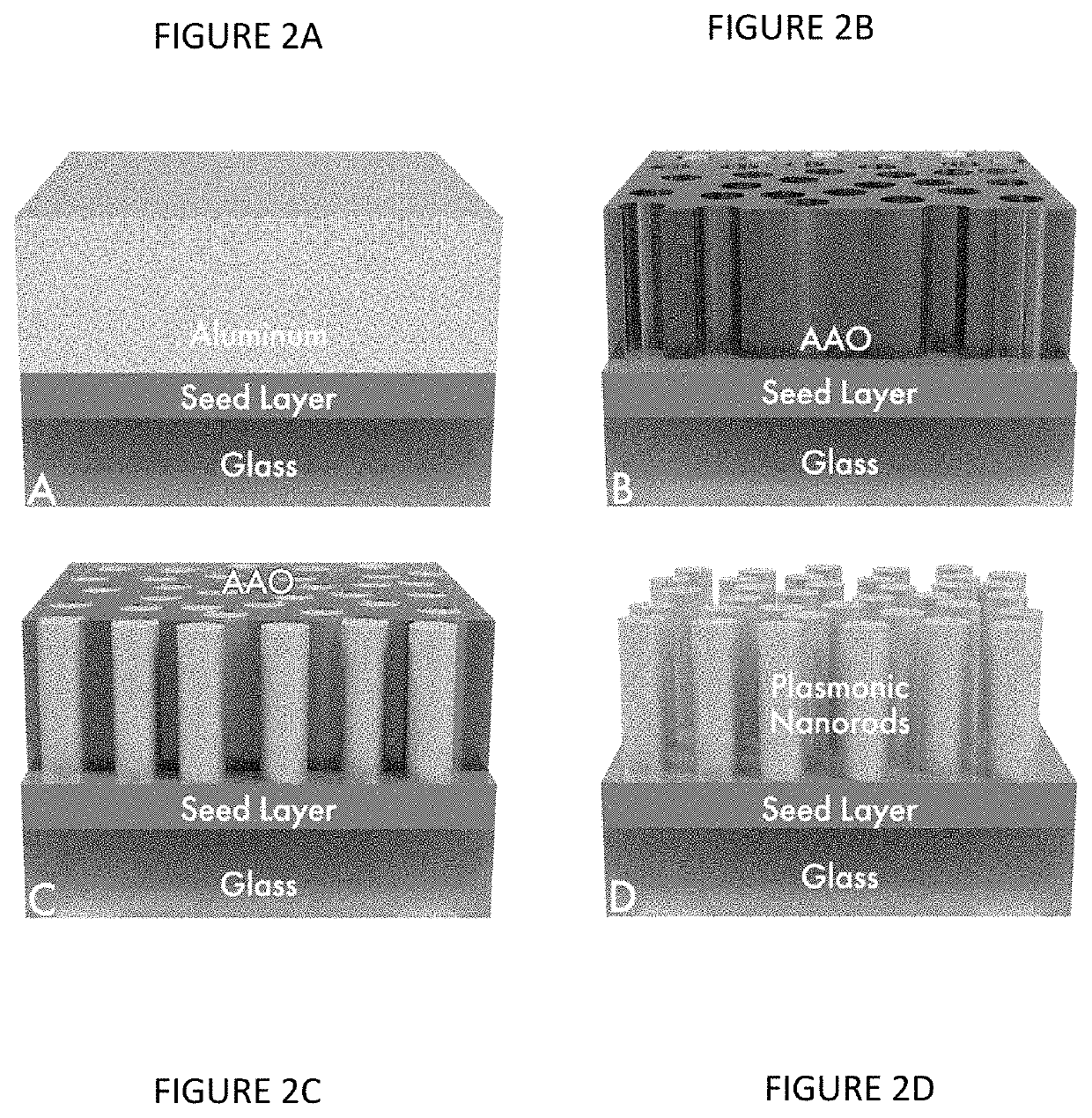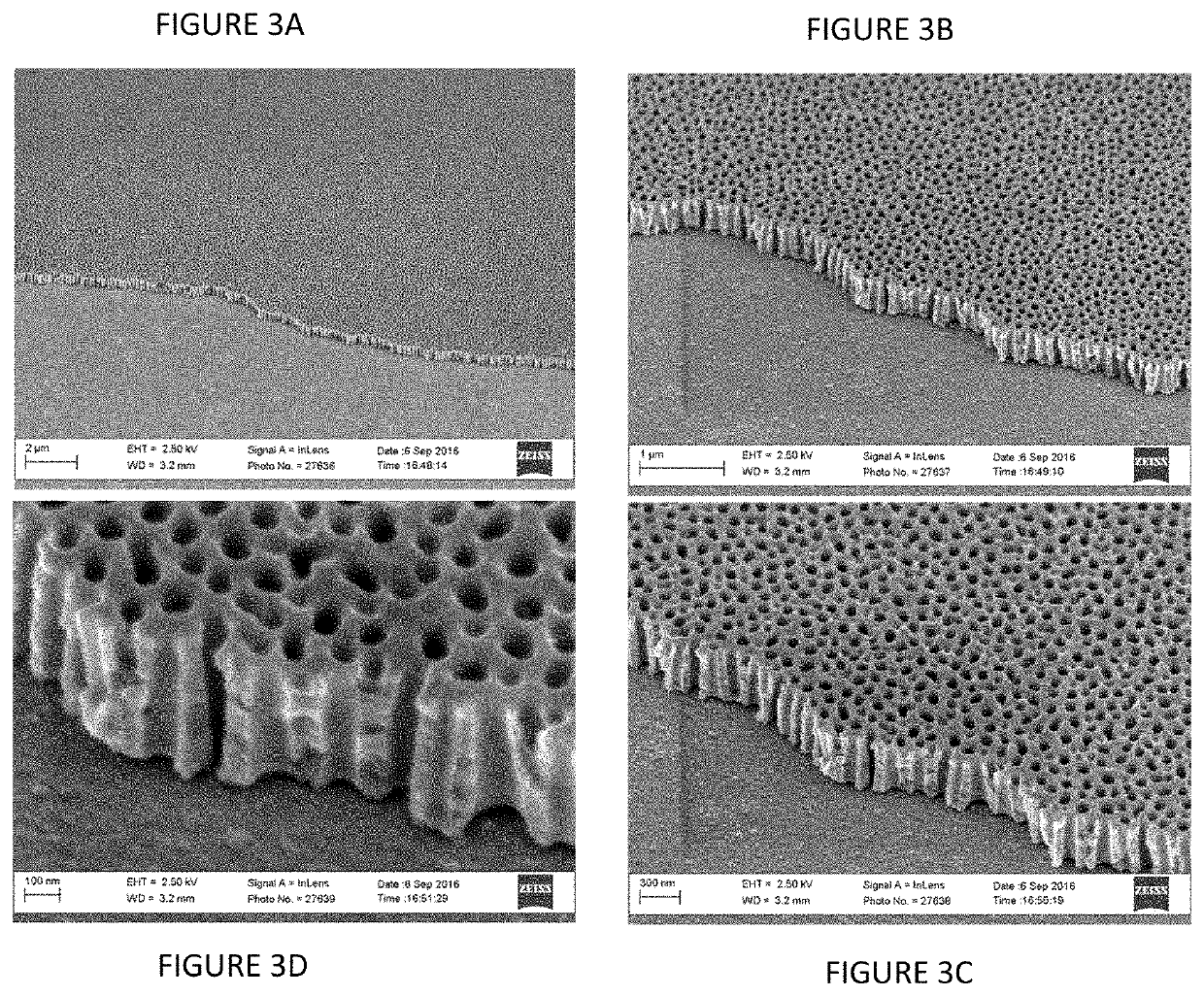Catalytic plasmonic nanomaterial
a plasmonic nanomaterial and catalytic technology, applied in physical/chemical process catalysts, metal/metal-oxide/metal-hydroxide catalysts, instruments, etc., can solve the problem of not being financially viable as currently implemented, lack of use discussion, and the limiting factor of current reactor activation energy, etc. problem, to achieve the effect of increasing reaction area and light harvesting
- Summary
- Abstract
- Description
- Claims
- Application Information
AI Technical Summary
Benefits of technology
Problems solved by technology
Method used
Image
Examples
example 1
Fabrication and Characterization of Plasmonic Nanomaterials
[0122]Silver plasmonic nanomaterial samples are prepared on 50 mm×50 mm coupons of CORNING® WILLOW® Glass. The coupons are first coated with a 10-30 nm Ti adhesion layer, followed by a 20-50 nm Ag layer and then an Al layer of 200-800 nm thick. The deposition is performed via sputter and / or e-beam evaporation under ultra-high vacuum. The coated coupons are then mounted in an electrochemical immersion process cell which is used to make electrical contact using a pogo-probe and O-ring assembly and carry the sample through the anodization and electroplating steps of the nanofabrication process. The pogo probe allows ease of handling as the samples are electrochemically processed with minimal contact area.
[0123]The plasmonic nanomaterial is fabricated on coated glass by first completely anodizing the Al layer and forming a nanoporous AAO template used for nanorod array synthesis. It is well established that the electrochemical o...
example 2
Catalytic Activation of Silver Plasmonic Nanorod Arrays
[0126]Cu—Pd bimetallic catalysts have greater CH3OH formation rates than either Cu or Pd monometallic catalysts exhibit and are effective at promoting the reaction CO2+2H2→CH3OH. The preparation of a stoichiometrically controlled bimetallic layer on the nanorod surfaces can be performed with varying the coverage of the Cu—Pd bimetal. By controlling the surface stoichiometry of Cu and Pd on the Ag nanostructures, optimal formulations of bifunctional, bimetallic catalysts can be prepared. The Pd sites provide active locations for the dissociative adsorption of H2, while the adjacent, or vicinal Cu sites, promote dissociative adsorption of CO2 to form adsorbed CO and oxygen species, which subsequently undergo facile reduction to form CH3OH and H2O as products. In the present invention, a bimetallic layer is applied to the silver nanorod arrays to catalytically activate the plasmonic nanomaterial. Such coated nanorods are represente...
example 3
Photocatalytic Synthesis of CH3OH from CO2 and H2 Using Optical Flow Reactor
[0129]An optical flow reactor design that utilized for the light induced synthesis of methanol from CO2 and H2 via the present catalytic plasmonic nanomaterial invention is shown in FIG. 15. This is a continuous gas-phase flow-reactor design incorporating feed and product sampling and analysis. The volume of the reaction vessel volume is 50 mL and it accommodates two 50×50 mm square coupons of the catalytic plasmonic nanomaterial. It has a low-profile bed for short residence time short, i.e. 30 seconds at 100 sccm flow (standard cubic centimeters per minute). The system is mounted in a heating mantle to be used as needed, although optical power from the LED array is the primary driver in the reaction.
[0130]Regarding the present invention, the catalytic plasmonic nanomaterial can be used in a flow reactor 10, such as one represented in FIG. 15, such as for synthesis of methanol, ammonia, or other products. Fl...
PUM
| Property | Measurement | Unit |
|---|---|---|
| lengths | aaaaa | aaaaa |
| lengths | aaaaa | aaaaa |
| diameters | aaaaa | aaaaa |
Abstract
Description
Claims
Application Information
 Login to View More
Login to View More - R&D
- Intellectual Property
- Life Sciences
- Materials
- Tech Scout
- Unparalleled Data Quality
- Higher Quality Content
- 60% Fewer Hallucinations
Browse by: Latest US Patents, China's latest patents, Technical Efficacy Thesaurus, Application Domain, Technology Topic, Popular Technical Reports.
© 2025 PatSnap. All rights reserved.Legal|Privacy policy|Modern Slavery Act Transparency Statement|Sitemap|About US| Contact US: help@patsnap.com



